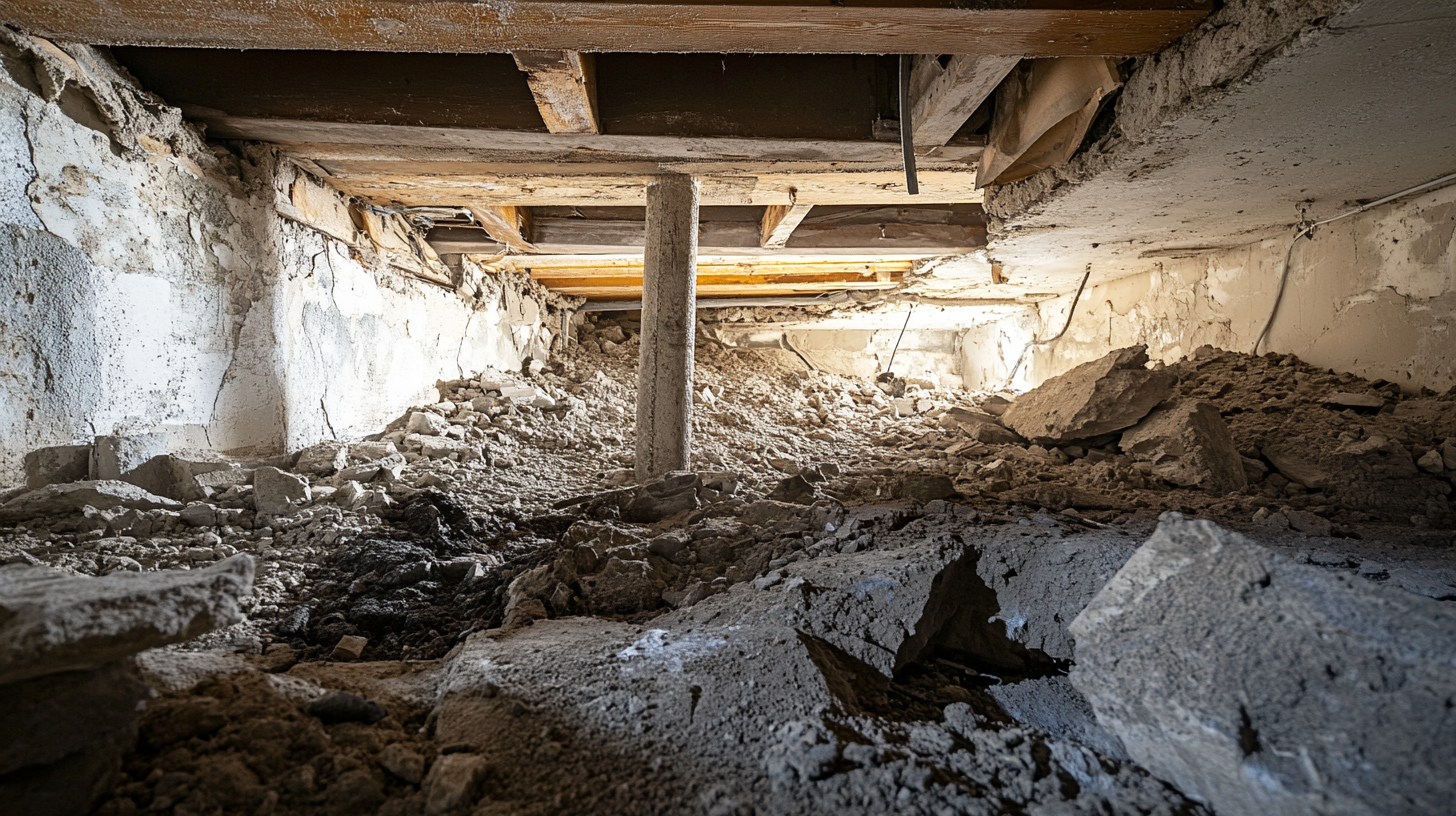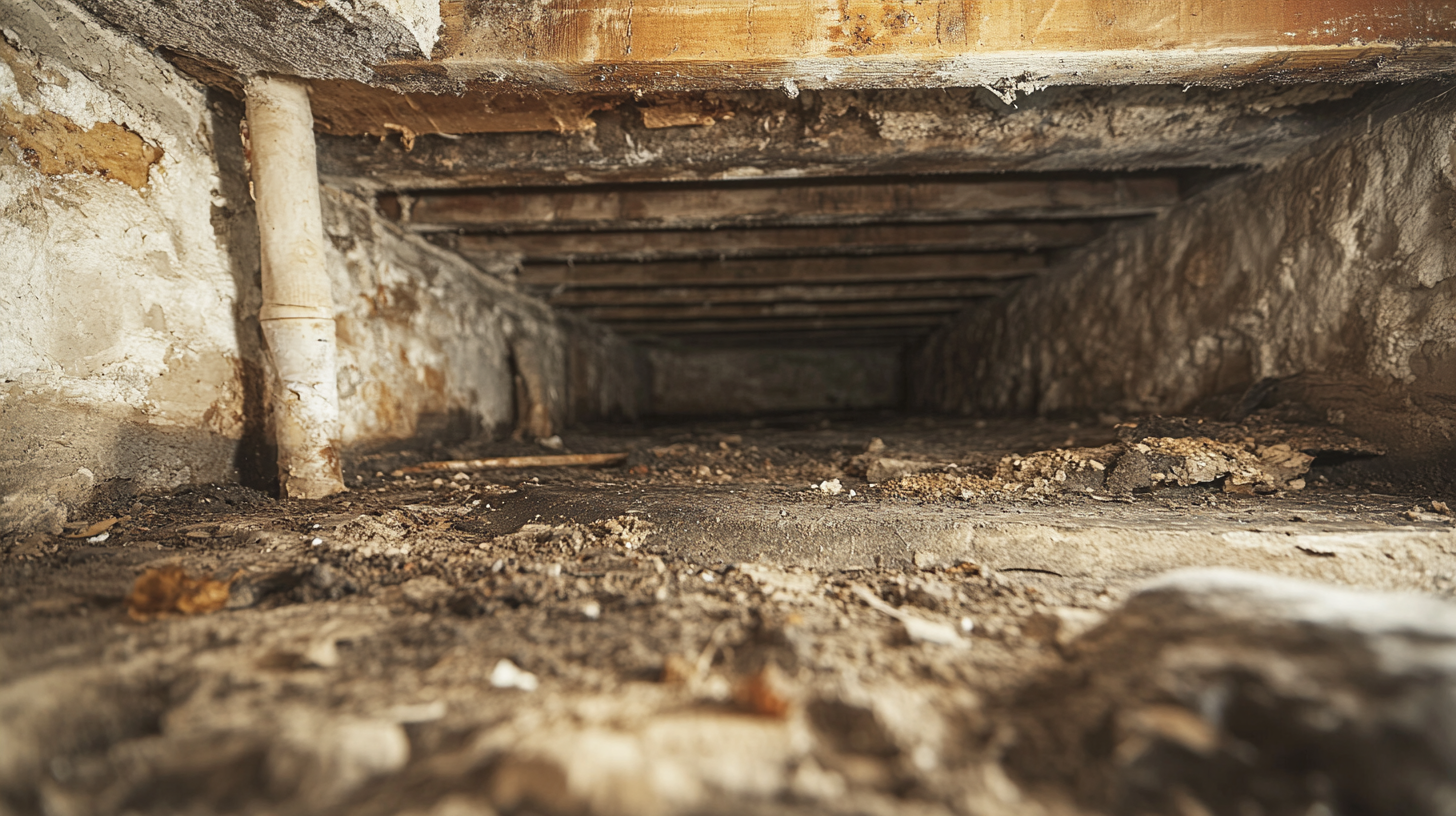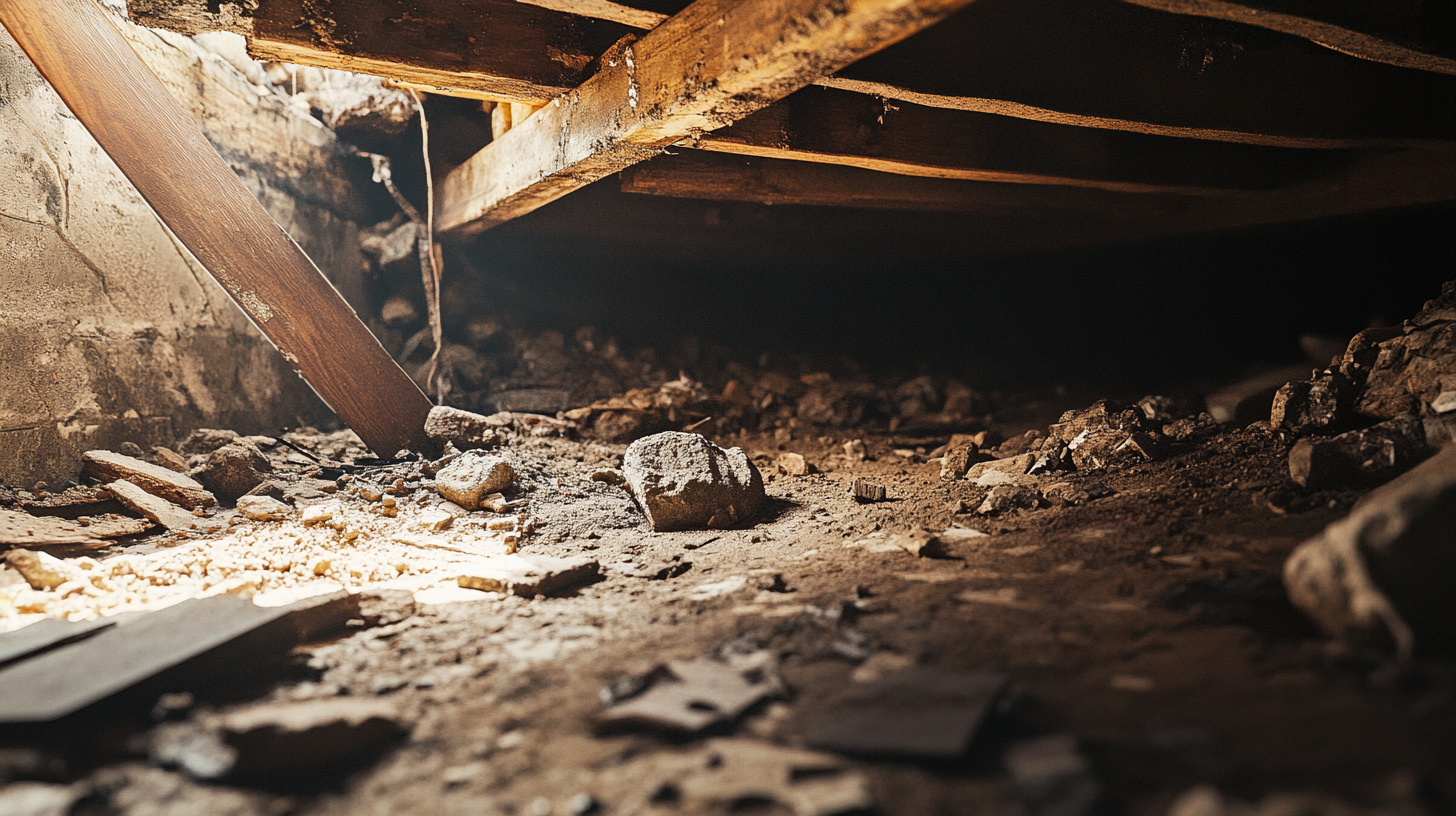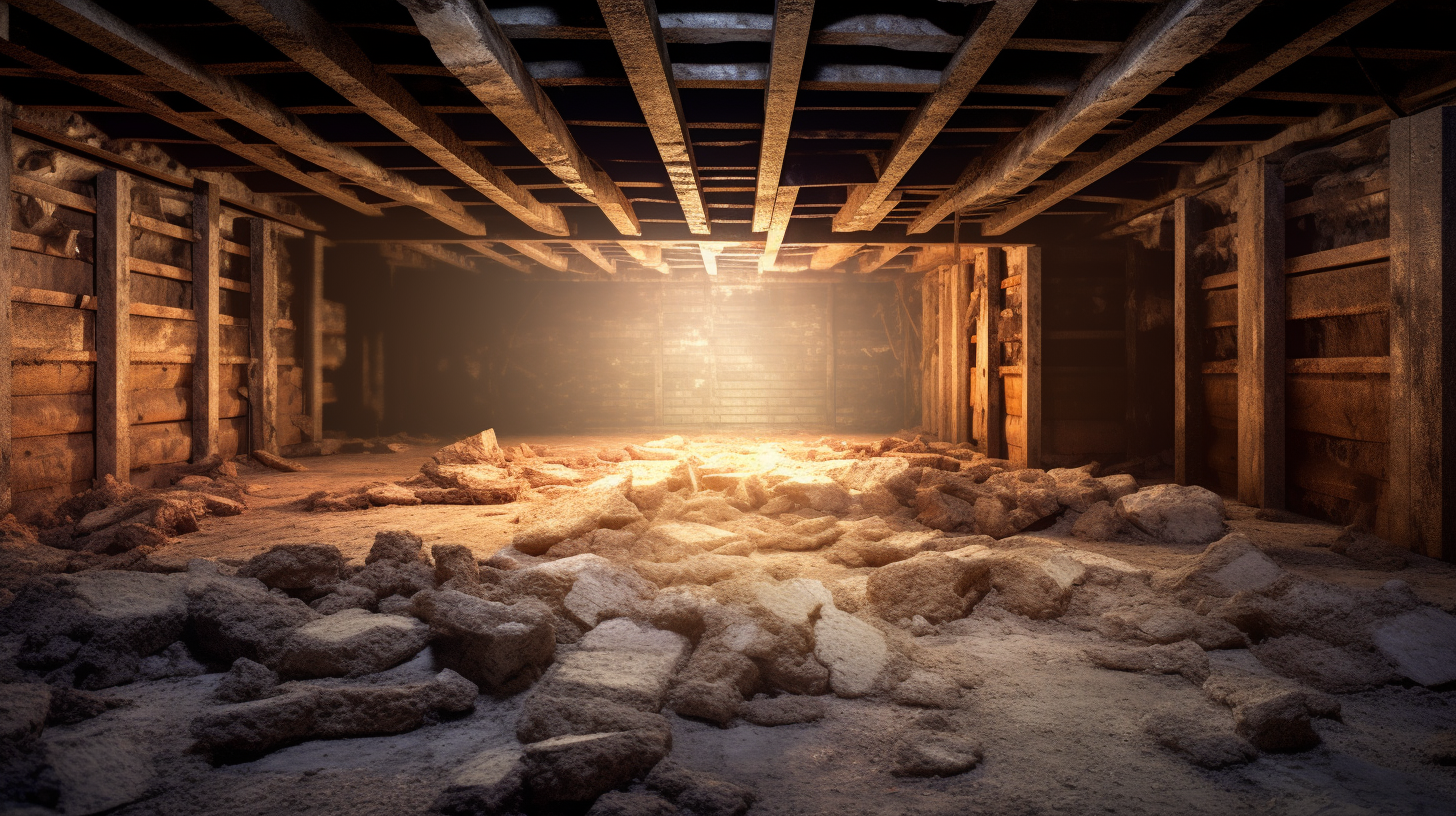Vapor barriers have long been a cornerstone of home construction, playing a vital role in protecting buildings from the damaging effects of moisture. Designed to prevent water vapor from passing through walls, floors, and ceilings, vapor barriers help maintain dry interiors, safeguarding against issues such as mold, wood rot, and insulation damage. Traditionally, these barriers have been used in areas where moisture infiltration is a significant concern, such as basements, crawl spaces, and exterior walls. By creating a protective layer that limits the movement of water vapor, traditional vapor barriers have been essential for maintaining a home’s structural integrity and ensuring a healthy indoor environment.
What Are Vapor Barriers and How Do They Work?
Definition of Vapor Barriers
Vapor barriers are materials specifically designed to prevent moisture in the form of water vapor from passing through walls, floors, and ceilings. By creating a barrier that blocks the movement of water vapor, they protect the structural components of a building from moisture-related damage.
Traditionally, vapor barriers have played a crucial role in construction, helping to prevent moisture buildup in areas such as wall cavities, flooring, and insulation, which can lead to mold growth, wood rot, and insulation degradation. These barriers are especially important in areas of the home where moisture exposure is high, like basements and crawl spaces, ensuring the home remains structurally sound and energy-efficient.
How Vapor Barriers Control Moisture
Vapor barriers work by stopping water vapor from traveling through building materials like drywall, wood, and insulation. Water vapor can move from areas of high humidity to low humidity, which means moisture from the ground or indoor air can infiltrate walls and floors. Without a vapor barrier, this moisture can accumulate in insulation or wall cavities, causing mold, mildew, and even structural damage. By blocking this movement, vapor barriers help keep the interior of the home dry and stable.
Moisture control is vital for maintaining a consistent indoor environment, particularly in humid climates where water vapor is more prevalent. In such climates, vapor barriers play an essential role in preventing condensation within walls, which could lead to long-term damage. By regulating moisture levels, vapor barriers also help preserve the efficiency of insulation, improve indoor air quality, and protect the home from moisture-related problems.
The Link Between Moisture and Indoor Air Quality
How Moisture Affects Indoor Air Quality
Excess moisture in a home can have a significant impact on indoor air quality. When humidity levels are too high, it creates an environment conducive to various biological contaminants that can compromise the air you breathe.
- Mold Growth: Moisture provides the perfect environment for mold to thrive. Mold releases spores into the air, which can degrade indoor air quality and contribute to respiratory problems.
- Dust Mites: High humidity encourages the growth of dust mites, which are a common allergen. Dust mites can trigger asthma attacks and allergic reactions in sensitive individuals.
- Bacterial Growth: Excess moisture fosters the growth of bacteria, which not only contributes to poor air quality but can also create unpleasant odors and potentially harmful air pollutants.
Preventing Mold and Mildew Growth
Moisture trapped in walls, floors, or ceilings creates an ideal breeding ground for mold and mildew. When these organisms grow, they release spores into the air, which can spread throughout the home. Mold spores are known to cause a variety of health issues, particularly for individuals with asthma, allergies, or weakened immune systems. Prolonged exposure to mold spores can lead to respiratory irritation, coughing, and even more severe lung conditions. By controlling moisture levels with the proper use of vapor barriers, homeowners can prevent mold and mildew growth, thus safeguarding both their home’s structure and the quality of the indoor air.
How Vapor Barriers Contribute to Healthier Indoor Air
Blocking Moisture Entry Points
Vapor barriers play a vital role in preventing moisture from entering a home, which can directly impact indoor air quality by reducing humidity and the risk of mold growth. Key areas where vapor barriers are most effective include:
- Foundations and Crawlspaces: Vapor barriers stop moisture from rising through the ground and entering the home, preventing excess humidity that can lead to mold and mildew.
- Walls and Attics: By preventing warm, moist air from reaching colder surfaces, vapor barriers help reduce condensation, which is a major cause of mold growth inside walls, ceilings, and attics.
Reducing Humidity Levels
Vapor barriers are essential for controlling indoor humidity levels, particularly by blocking moisture from entering through walls, floors, and ceilings. This helps maintain an optimal indoor humidity level (between 30-50%), which not only supports better indoor air quality but also minimizes the likelihood of allergens thriving in the home.
- Maintaining Optimal Humidity: Proper humidity control reduces the growth of mold and dust mites, both of which thrive in high-humidity environments and can contribute to allergies and asthma.
Preventing Contaminants from Entering the Air
In addition to managing moisture, vapor barriers help seal the building envelope, preventing contaminants from entering indoor spaces. This not only enhances air quality but also protects the health of the home's occupants.
- Blocking Pollutants: By creating a barrier that prevents moisture infiltration, vapor barriers reduce the risk of pollutants like mold spores and volatile organic compounds (VOCs) from circulating in the air.
- Radon Gas Protection: In crawlspaces and basements, vapor barriers can also prevent radon gas, a hazardous radioactive gas that seeps through soil and foundations, from entering the home and posing health risks.
Overall, vapor barriers contribute to a healthier indoor environment by minimizing exposure to harmful contaminants and keeping moisture-related issues at bay.
The Role of Vapor Barriers in Controlling VOCs and Off-Gassing
Vapor Barriers and Indoor Air Pollutants
Vapor barriers play a critical role in reducing indoor air pollutants by preventing moisture from interacting with building materials, which can trigger the release of volatile organic compounds (VOCs) and other harmful chemicals. Key ways vapor barriers help control these pollutants include:
- VOCs: Certain building materials, such as adhesives, paints, and sealants, can release VOCs when exposed to moisture. Vapor barriers prevent moisture infiltration, reducing the risk of off-gassing of these potentially harmful chemicals into indoor air.
- Off-Gassing from Insulation: Insulation materials, especially those containing chemicals, can off-gas when they absorb moisture. Vapor barriers protect insulation by keeping it dry, preventing the release of chemicals that can compromise indoor air quality.
Vapor Barriers in Sustainable and Non-Toxic Homes
Vapor barriers contribute significantly to healthy and sustainable building practices by reducing the risk of chemical exposure from damp building materials. By controlling moisture, vapor barriers help ensure that homes are healthier and safer for occupants.
- Minimizing Chemical Exposure: In sustainable and non-toxic home construction, vapor barriers act as a safeguard, reducing the risk of harmful off-gassing from building materials. This is particularly important in homes built with materials that could release VOCs when exposed to moisture.
- Environmentally Friendly Vapor Barriers: In addition to enhancing indoor air quality, the use of eco-friendly vapor barrier materials further supports sustainable construction practices. These materials not only control moisture but also minimize environmental impact, contributing to healthier homes that align with green building standards.
By preventing moisture from triggering chemical releases and off-gassing, vapor barriers play an essential role in creating healthier, more sustainable living environments.
Best Practices for Using Vapor Barriers to Improve Indoor Air Quality
Installing Vapor Barriers in Key Areas
To maximize the impact of vapor barriers on indoor air quality (IAQ), it's essential to install them in the most vulnerable areas of the home where moisture intrusion is likely to compromise air quality:
- Crawlspaces and Basements: Vapor barriers prevent ground moisture and radon gas from entering the home, reducing humidity and protecting the air from hazardous gases and pollutants.
- Walls and Attics: Installing vapor barriers in walls and attic spaces stops warm, moist air from condensing in these areas, preventing mold growth that could lead to poor air quality.
- Floors: Vapor barriers beneath floors, particularly over concrete slabs, reduce the risk of moisture seeping into the home and creating damp conditions that degrade indoor air quality.
Pairing Vapor Barriers with Ventilation
While vapor barriers are effective at blocking moisture, they must be paired with proper ventilation to ensure balanced moisture control and air quality. Without adequate ventilation, moisture and indoor air pollutants can accumulate, affecting overall IAQ.
- Ventilation for Moisture Control: Proper ventilation systems, such as exhaust fans and whole-house ventilation, help remove excess moisture that vapor barriers trap, ensuring a dry and healthy environment.
- Removing Airborne Contaminants: Ventilation works hand-in-hand with vapor barriers to remove airborne contaminants like VOCs, mold spores, and other pollutants, improving overall indoor air quality by promoting better air circulation.
Avoiding Common Installation Mistakes
To ensure vapor barriers function effectively and contribute to improved IAQ, avoid these common installation errors that can lead to moisture problems and air quality issues:
- Gaps or Tears in the Barrier: Any damage to the vapor barrier, such as gaps or tears, allows moisture to seep through, negating its protective benefits and potentially leading to mold growth.
- Incorrect Placement: Installing vapor barriers on the wrong side of the insulation, particularly in climates where this can lead to trapped moisture, can result in condensation and mold, which will harm air quality.
- Poor Sealing Around Openings: Improper sealing around seams, windows, ducts, and other openings can let moisture bypass the barrier, undermining its effectiveness and compromising air quality in the home.
By following these best practices and avoiding common pitfalls, vapor barriers can greatly enhance indoor air quality, ensuring a healthier, more comfortable living environment.
FAQs
Contact Trench Guys Today!
Trench Guys will do everything we can to ensure your experience with us is excellent.
Request A FREE Estimate
Request a Free Estimate Form
Checkout Recent Post




Got a Question? We’re Here to Help.
You can arrange an appointment or make an enquiry by phone or email, orget in touch to us via our contact form.



